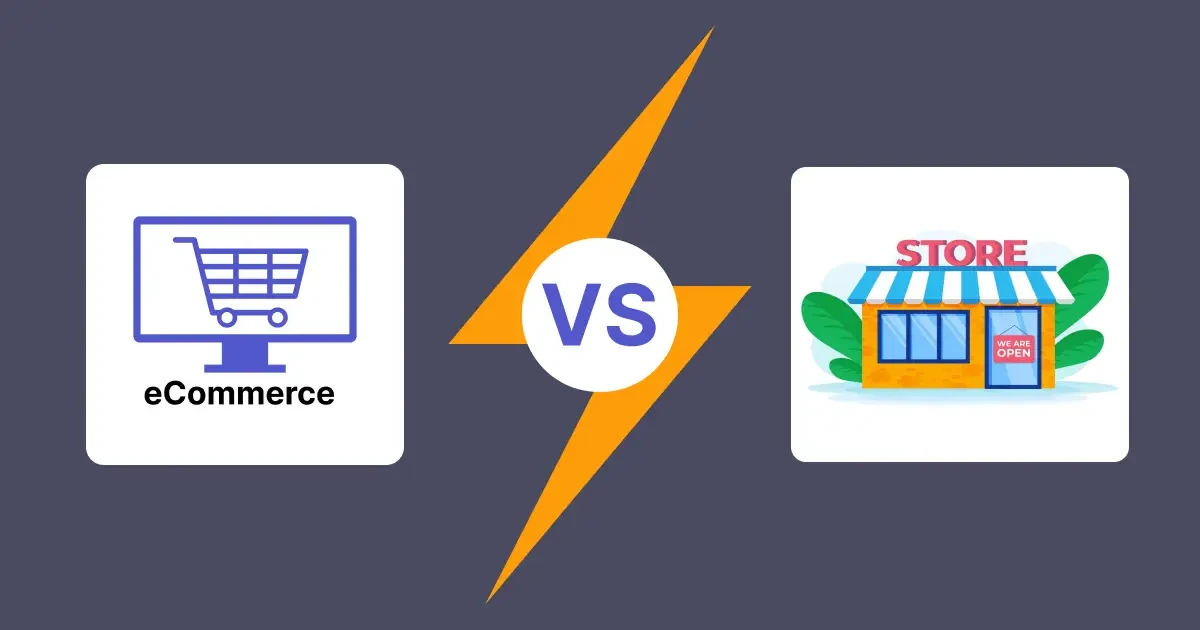In today’s fast-paced world, businesses have two primary options for selling products: eCommerce and traditional retail. While both models have their own benefits, the big question is: Which one is more profitable? Let's dive into the key differences between eCommerce and traditional retail to understand which model might be best for your business.
What is eCommerce?
eCommerce refers to selling products or services online through an online store. Customers can browse items, add them to their cart, and purchase them from anywhere at any time. Some popular eCommerce platforms include Shopify, WooCommerce, and BigCommerce.
What is Traditional Retail?
Traditional retail refers to selling products in physical stores. Customers visit the store, browse products in person, and make purchases directly from the shelf. Examples of traditional retail include grocery stores, clothing stores, and department stores.
Profitability of eCommerce
- Lower Overhead Costs One of the biggest advantages of eCommerce is the low overhead costs. Unlike physical retail stores, eCommerce businesses do not need to rent or maintain a physical location. This means they can save on costs like rent, utilities, and in-store staff salaries. With lower operational costs, eCommerce businesses can allocate more resources toward marketing and product development.
- Scalability eCommerce businesses have the advantage of easy scalability. Once you set up your online store, it can serve customers from all over the world. You can easily expand your product offerings, manage more customers, and increase sales without the need to invest in additional physical locations.
- Access to a Global Market With eCommerce, you can reach customers in any location, 24/7. This global access opens up new revenue streams. Customers from different countries or regions can easily find and buy your products. Additionally, eCommerce stores can run promotions and sales campaigns that appeal to a wide audience.
- Reduced Inventory Management Costs Many eCommerce stores use dropshipping or fulfillment centers, which help minimize the need for holding large amounts of inventory. This reduces the upfront cost of purchasing products in bulk, allowing business owners to test new products without significant financial risk.
- Higher Profit Margins Since eCommerce businesses save on operational costs like rent, utilities, and in-person staff, they often enjoy higher profit margins. This allows eCommerce businesses to offer competitive pricing and potentially achieve greater profitability.

Profitability of Traditional Retail
- Personal Customer Experience In traditional retail, the in-store experience is key. Customers can touch, feel, and try products before purchasing. This can increase the likelihood of an impulse buy, boosting sales. Physical stores can also offer personalized service, which can lead to customer loyalty and repeat business.
- Brand Recognition Having a physical store can help increase brand recognition, especially in busy or popular locations. The visibility of a store on a high-traffic street or mall can attract more foot traffic. People may also feel more comfortable buying from a physical store because they can immediately see and inspect the product.
- Local Market Focus Traditional retail tends to focus on a specific local market. If your products are tailored to a local community, a physical store may be more profitable. Additionally, retail businesses can thrive in certain sectors, such as groceries or other daily needs, where customers prefer the convenience of visiting a nearby store.
- Cash Flow Traditional retail stores typically have better cash flow because customers pay immediately at checkout. With eCommerce, businesses may face delays due to shipping or payment processing. Instant cash flow can help traditional retailers manage inventory and pay for operating expenses more quickly.
- Reduced Return Rates In-person shopping may reduce the likelihood of returns compared to online stores. Customers can physically inspect the product before purchasing, which can lead to fewer misunderstandings about product quality or specifications. This can save traditional retailers money on return shipping and processing.
Which Model Is More Profitable?
While traditional retail has its strengths, eCommerce is generally more profitable for most businesses in today's digital age. The low overhead costs, easy scalability, and ability to reach a global audience make eCommerce a more cost-effective option. In addition, eCommerce businesses can save on inventory costs and enjoy higher profit margins.
However, traditional retail can still be a profitable option if your business benefits from in-person interaction or serves a niche market where physical stores are highly valued. It’s important to consider your target audience, location, and product type when deciding between the two models.
Combining Both Models for Greater Profitability
Many businesses today use both eCommerce and traditional retail to maximize profitability. For example, some businesses have physical stores but also run an online shop to expand their reach. This "omnichannel" approach allows businesses to cater to both online shoppers and customers who prefer shopping in person. It’s a way to get the best of both worlds.
Conclusion
In conclusion, eCommerce tends to be more profitable due to its lower costs, scalability, and broader market reach. However, traditional retail can still offer advantages in terms of customer experience, cash flow, and local market presence. If you’re looking to start a business with a higher profit potential, eCommerce is a great choice. But if you already have a successful physical store, combining the two models can help you grow and reach more customers. The key is to evaluate your unique business needs and audience to choose the best path to profitability.



